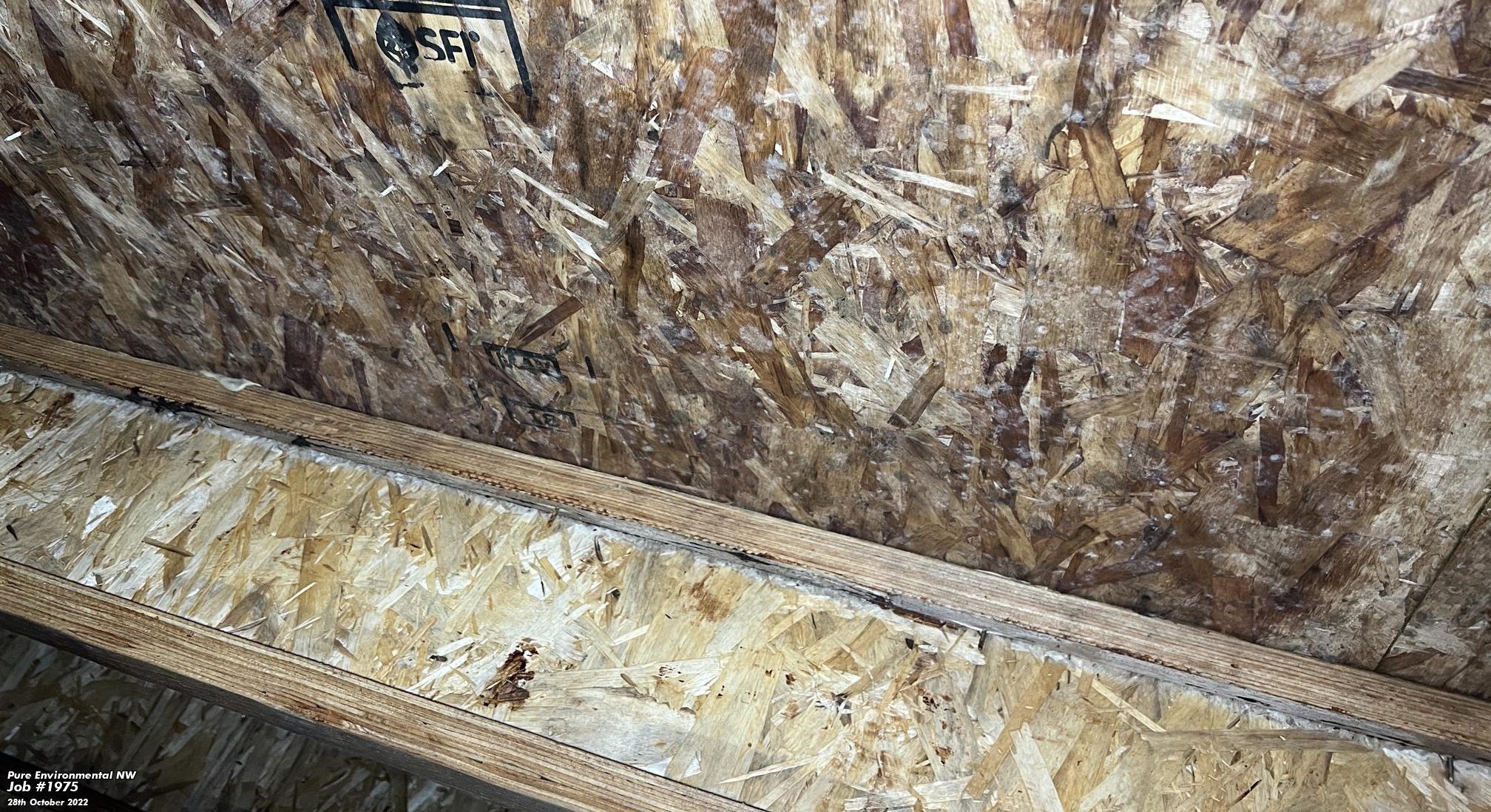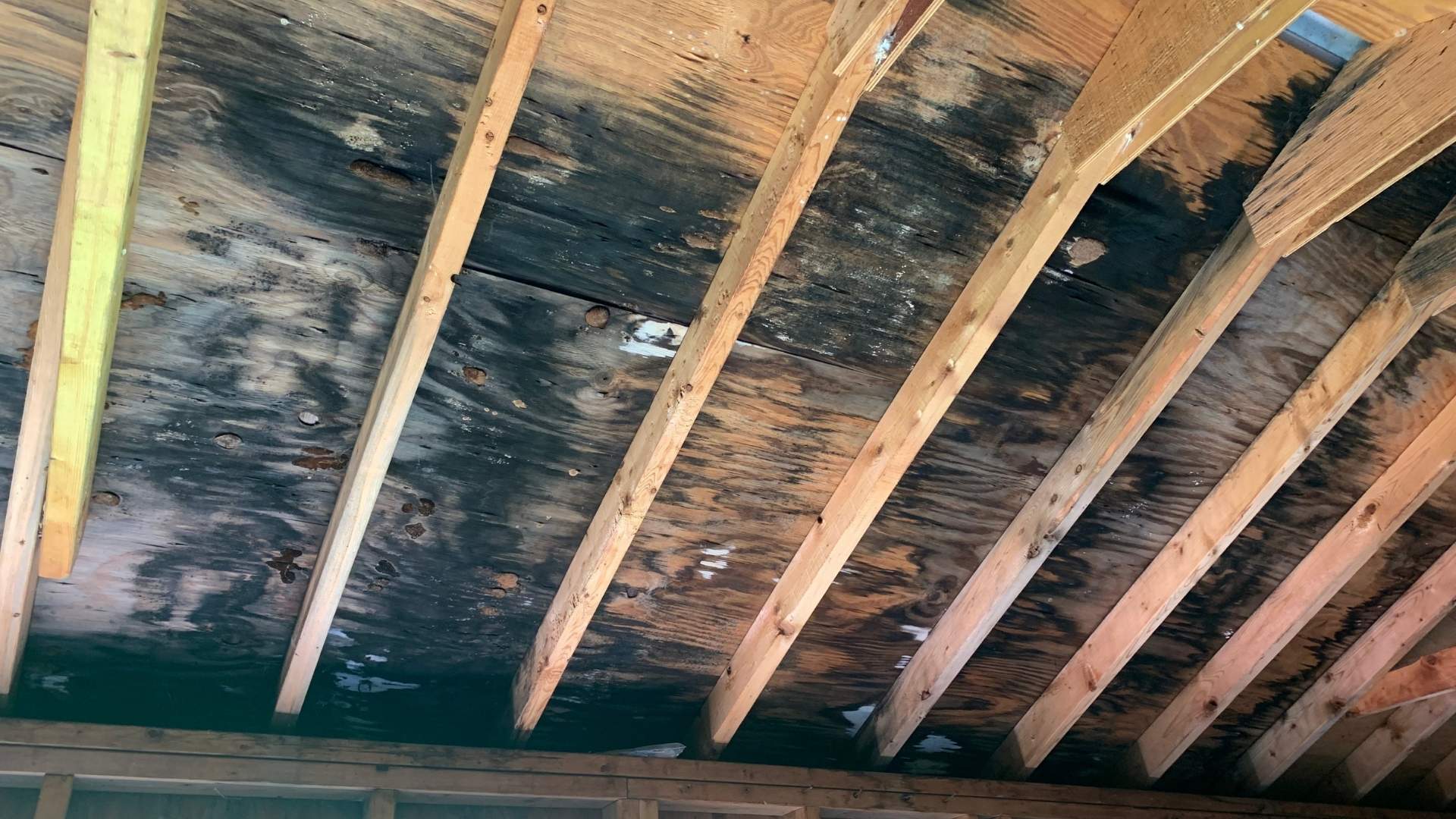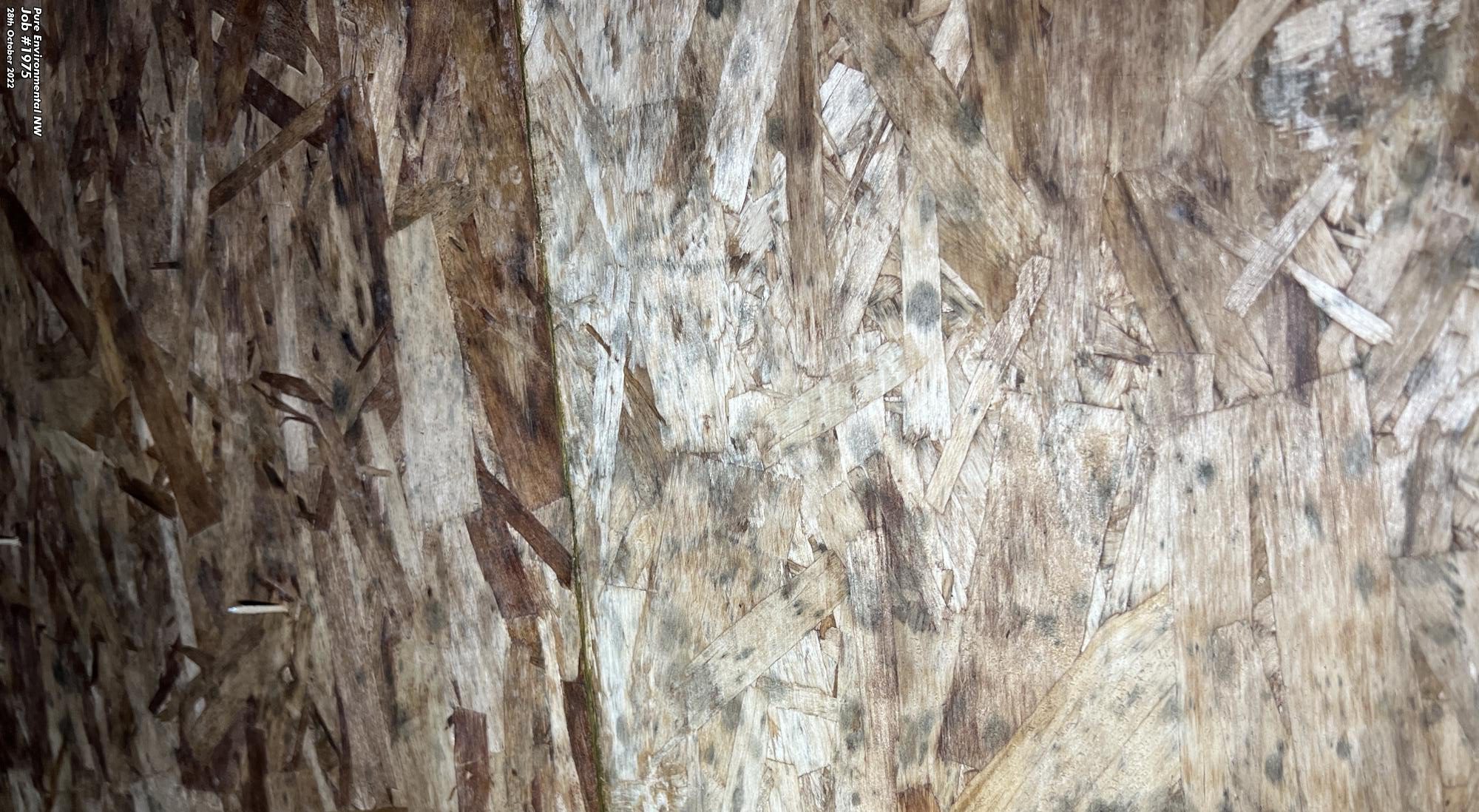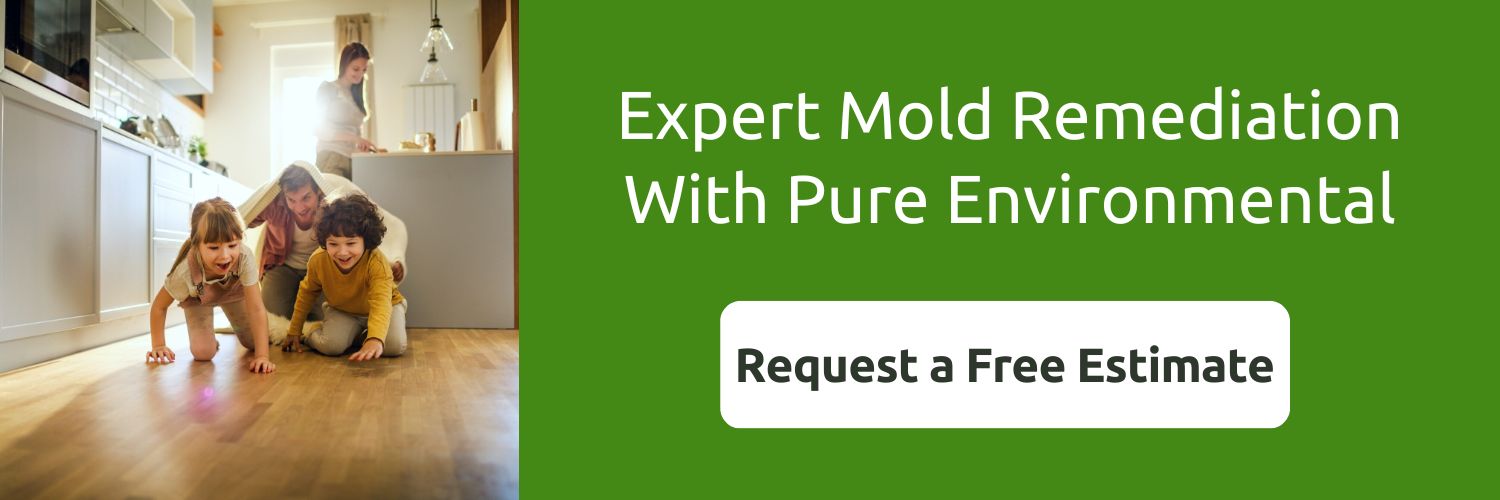You didn’t realize you had an issue until it was too late. And who could blame you? It’s not like you’re in your crawl space every day.
Now you have to deal with a crawl space full of mold — which is not only nasty but can also be hazardous to your health.
What’s a homeowner to do? How do you get rid of mold in a crawl space?
We can help!
This article discusses the signs of mold in a crawl space, the best way to get rid of it, and how to keep it from coming back.

Table of Contents
- What Are the Signs of Mold or Mildew in a Crawl Space?
- Should I Worry About Mold in a Crawl Space?
- What Do You Do if You Have Mold in Your Crawl Space?
- Does Vinegar Kill Mold in Crawl Space?
- 7 Steps for Getting Rid of Mold in a Crawl Space
- Is Mold in Crawl Spaces Common?
- Pure Environmental: Providing Professional Mold Remediation in Washington & Oregon
What Are the Signs of Mold or Mildew in a Crawl Space?
How do you know you’ve encountered mold in your crawl space?
Keep an eye out for the following signs:
- Crawl space wood rot
- Warped wood floors
- Musty odors
- Water stains on baseboards
- Greenish or black spots on insulation and walls
- White powdery clusters
- Rotting or decaying beams and joists
- Respiratory issues, such as runny nose, itchy eyes, and cough
Whether you notice a moldy spot or two or a full-on infestation, the experts at Pure Environmental can help. Contact us today to learn more.
Should I Worry About Mold in a Crawl Space?
Not only is mold a harmful fungus that can spread quickly throughout your crawl space but it can also cause a variety of health problems, including:
- Wheezing
- Red/itchy eyes or skin
- A stuffy nose
- Lung irritation
- Sore throat
- Coughing
- Sneezing
- Allergies or asthma
- Shortness of breath; and
- Fever
As soon as you see signs of mold, take action to protect your home and your health.
What Do You Do if You Have Mold in Your Crawl Space?
Mold in your crawl space — even if it’s just a small amount — is a severe hazard and should be dealt with by professionals. Trained eyes can find mold and safely eradicate the problem.
Professional mold remediation companies are authorized to use professional-strength products and can also help remove any lingering odor.

Does Vinegar Kill Mold in Crawl Space?
Even though vinegar has antifungal and antibacterial properties, it is not effective when it comes to killing mold in a crawl space.
Calling a professional mold removal company, like Pure Environmental, is the only reliable way to kill mold in a crawl space and keep it from coming back.
7 Steps to Follow to Get Rid of Mold in a Crawl Space
Now that you know you have a problem, it is time to devise a plan to clean up your crawl space.
You can follow these steps if you try a DIY mold removal job. But remember, the most efficient way to deal with mold is to let the professionals handle it.
#1: Wear the Proper Personal Protective Equipment
Breathing mold is dangerous, and DIY mold removal involves investing money in supplies and gear. In some cases, wearing a full-face respirator is recommended.
The Centers for Disease Control and Prevention recommend using the following when dealing with mold:
- N-95 respirator
- Protective gloves
- Eye protection
- Long-sleeved shirt
- Long pants; and
- Waterproof boots
Hiring professionals means you don’t have to find time to fix this problem yourself or get your hands dirty.
#2: Confirm What Type of Mold Is Present
It’s essential to identify the type of mold you’re dealing with.
Although there are many types of mold, here are the most common types of indoor mold:
- Stachybotrys is known as black mold and is the most toxic mold.
- Alternaria often occurs on drywall, ceiling tiles, and within heating and air conditioning systems.
- Aspergillus grows indoors and is commonly found in homes and crawl spaces.
- Cladosporium grows in cool or warm areas, often on fabrics and wood surfaces.
- Penicillium grows on materials with water damage. This mold could be present if your crawl space has a dirt floor or decaying vegetation.

#3: Create a Source of Airflow
Increase airflow or create a vacuum using a negative air machine to clean the air while removing the mold. You want to prevent mold spores from traveling into other areas.
Additionally, covering openings like air conditioners, vents, and doors with plastic, is critical to keep mold spores from spreading throughout the house.
Containment is the name of the game.
#4: Eliminate the Source of Moisture
You must figure out the source of the moisture that caused the mold to grow.
The most common causes of excess moisture come from a:
- Leak
- Broken pipe; or
- Bad paper barrier
Maintaining a humidity level of 30 to 50% in your home can prevent mold from growing and spreading.
A dehumidifier can also help eliminate excess moisture. However, a dehumidifier will not kill or remove mold spores.
#5: Kill the Mold
Once the moisture problem is taken care of, you are getting closer to ending your rendezvous with mold. Now it is time to treat the infected areas.
For DIY removal, spray the mold with an antimicrobial chemical spray. Be sure to follow the manufacturer’s instructions. You may find it necessary to repeat the process.
The goal of using an antimicrobial chemical spray is not mold remediation. These sprays are only effective on areas they touch, and therefore do not replace professional cleaning techniques.
People often end up treating an area, but when a wall is opened, realize they failed to eradicate the problem the first time around. Now the problem is more significant — and more challenging to control.
Festering mold is no one’s friend.
#6: Eliminate the Evidence
After the mold is gone, there will still be staining and discoloration on the walls and wood.
Therefore, after removing the mold and cleaning the area, you should a mold stain remover or mold micro-encapsulant paint.
Cleaning the mold remnants is crucial, so it is easy to identify if the mold returns in the future.
#7: Recheck Yearly
If you want to avoid having to deal with a moldy crawl space in the future, don’t wait until your house inspection or for a pest control worker to tell you about your mold problem.
Be proactive by checking your crawl space every year in the Spring.
Is Mold in Crawl Spaces Common?
Mold in crawl spaces is a common problem. The narrow space between the first floor and the ground is ideal for mold because they are moist and humid.
Mold removal companies regularly find leaks and mold that have been going on for years in crawl spaces. By checking your crawl space yearly, you can avoid any big surprises.
Pure Environmental: Providing Professional Mold Remediation in Washington & Oregon
If you’re dealing with a mold problem, don’t worry — Pure Environmental can help. We’ve been eradicating mold in the Pacific Northwest since 2010.
Our PurAyr technology:
- Oxidizes and neutralizes air and surface contaminants
- Eliminates odors
- Improves indoor air quality; and
- Pinpoints source odors
Pure Environmental uses more potent products than what you find in the market. And our products are:
- Non-toxic
- Environmentally friendly; and
- 100% green
And we do more than just mold removal. We also specialize in:
- Odor removal
- Crawl space inspection and repairs
- Air filtration
- Disaster restoration
- And more
Contact Pure Environmental today to remove that gnarly mold from your crawl space once and for all!
Recent posts
- Advice From the Pros: How To Hire a Contractor for Home Renovations
- After the Fire: What To Expect From Smoke Damage Restoration Services
- Home Insurance During Renovations: What Is Covered and What To Know Before Getting Started
- Mitigation and Restoration: Understanding the Difference Between the Two and Why They’re Both Necessary
- Should You Stay or Should You Go? Know When To Walk Away From a House With Mold
